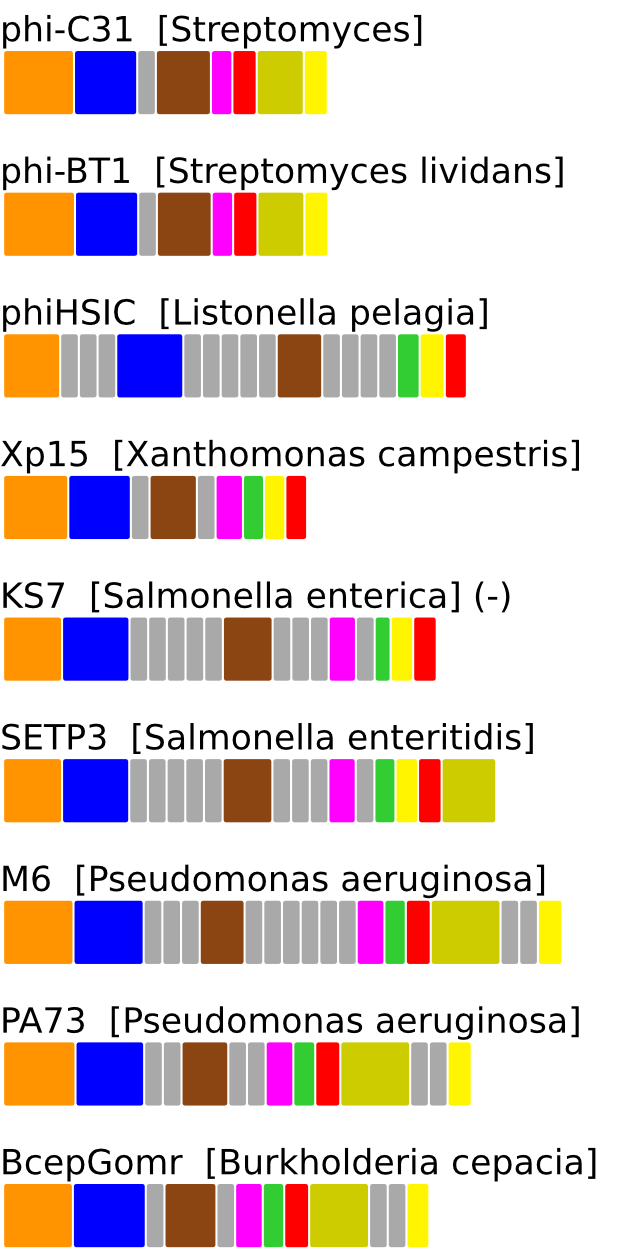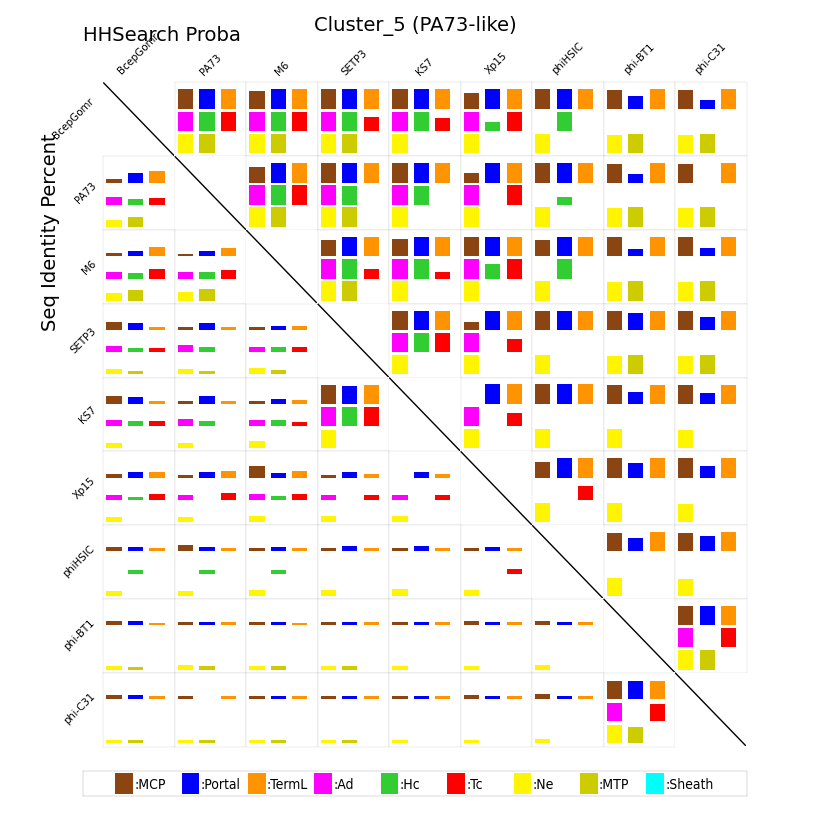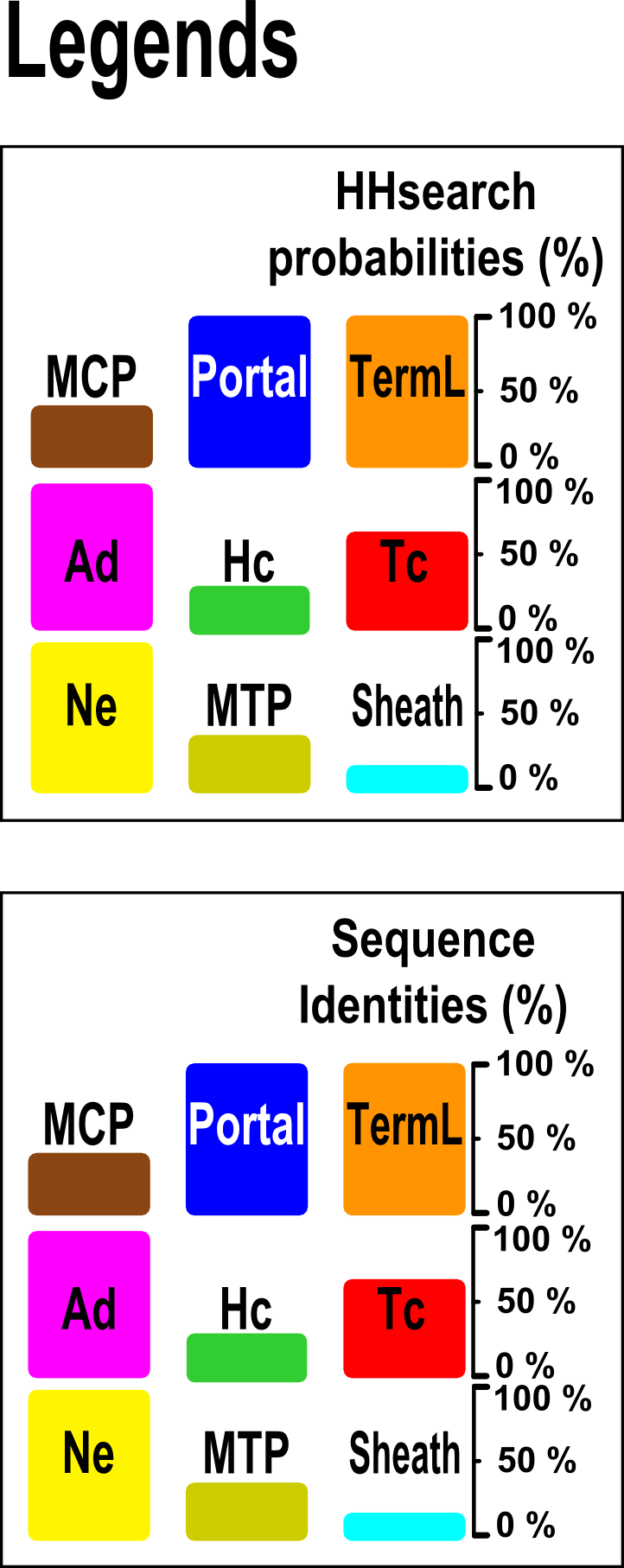The neck is the head-to-tail interface which is formed by the connector and the tail-completion proteins. The connector is formed by the portal and the head-completion proteins. (Click here for a general description of the assembly pathway of tailed bacteriophages)
adopts the structural organization of the Siphoviridae phage SPP1 neck. It is formed by a portal protein, an Ad1 (Adaptor of type 1), a Hc1 (Head-closure of type 1), a Ne1 (Neck protein of type 1) and a Tc1 (Tail-completion of type 1) proteins.
is strictly composed of siphophages which all but two infect the same class of bacteria: all the hosts belong to Proteobacteria except the host of phages phi-C31 and phi-BT1 (Streptomyces) which belong to Actinobacteria. Interestingly, the two phages infecting Actinobacteria lack the gene Hc1 and thus appear as outliers probably due to clustering inconsistencies. The gene order in the genome for the other phages follows the canonical gene organization observed in clusters 1-3 for the genes coding for the Terminase, the Portal, the MCP, Ad1, Hc1 and Tc1 proteins. The position of the gene Ne1 is more versatile with half of phages displaying an unusual/atypical gene position after the gene MTP. Note the case of phiHSIC which lacks the Ad1 gene.


(-) indicates that the genetic context is given in the reverse order.
For every pair of phages sharing a given neck type and for all the components of the capsid-neck-tail module they share (out of the nine possible components described below), we calculated the corresponding HHsearch probability and sequence identity scores. The resulting scores are illustrated with colored squares whose size is proportional to the considered score (similarity scores lie in the bottom half matrix while HHsearch probabilities lie in the top half matrix). See legend below for square colors and for identity or HHsearch probability scores.

